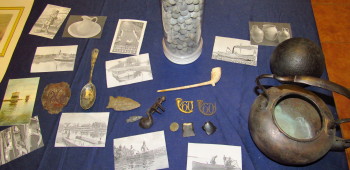Is There More We Should Remember (on Remembrance Day)?
Guest Speaker: Desmond Morton
When: Thursday, March 16, 2017, from 19:30 to 21:00
Where: Centennial Hall
288 Beaconsfield Blvd, Beaconsfield, H9W 4A4
Lecture in English.
150 years after Confederation, the myth of Two Solitudes engages and haunts us. What does the historical record teach us about this myth, e.g. regarding Quebec and Canada in the Great War?
Desmond Dillon Paul Morton OC CD FRSC (Calgary 1937- ) is a  Canadian historian who specializes in the history of the Canadian military, as well as the history of Canadian political and industrial relations. He is the author of over thirty-five books on Canada, including the popular A Short History of Canada.
Canadian historian who specializes in the history of the Canadian military, as well as the history of Canadian political and industrial relations. He is the author of over thirty-five books on Canada, including the popular A Short History of Canada.
In 1996, he was made an Officer of the Order of Canada. He has been a Fellow of the Royal Society of Canada since 1985.
Son and grandson of militaries, he is a graduate of the Collège militaire royal de St-Jean, the Royal Military College of Canada, a Rhodes Scholar, the University of Oxford (where he received his PhD), and the London School of Economics. He spent ten years in the Canadian Army (1954–1964 retiring as a Captain).
Later on, he began his teaching career and was Principal of Erindale College, University of Toronto, from 1986 to 1994.
Morton is the Hiram Mills professor emeritus of History at McGill University, as well as the past director of the McGill Institute for the Study of Canada, in Montreal, Quebec.
Morton once wrote: "For Canadians, Vimy Ridge was a nation building experience. For some, then and later, it symbolized the fact that the Great War was also Canada's war of independence".
Source: Article Desmond Morton (historian) from English Wikipedia Consulted on 2017-02-06
================================================


 Port Royal. Amy gave the Roddick Gates at McGill, in memory of her husband, a Newfoundlan
Port Royal. Amy gave the Roddick Gates at McGill, in memory of her husband, a Newfoundlan

 In 1609 and 1611, Samuel de Champlain visited the sites of today's Kahnawake and Montréal (marking the latter with an A on his 1612 map). Here he had to portage around “Sault Saint-Louis”, the Lachine Rapids, noting their importance to the natives gathering to parlay and trade, the former diplomatic function commemorated in the Iroquoian name Tiohtiagi, and the latter commerce still a hallmark of Montréal's importance at the start of the St. Lawrence Seaway.
In 1609 and 1611, Samuel de Champlain visited the sites of today's Kahnawake and Montréal (marking the latter with an A on his 1612 map). Here he had to portage around “Sault Saint-Louis”, the Lachine Rapids, noting their importance to the natives gathering to parlay and trade, the former diplomatic function commemorated in the Iroquoian name Tiohtiagi, and the latter commerce still a hallmark of Montréal's importance at the start of the St. Lawrence Seaway.




 We now know that the earthwork tradition is very ancient in this region but that it particularly exploded during two periods. The first explosion occurred about 100 BC and continued to about 400 BC, contemporaneous with the Mediterranean Roman Empire, and the second occurred about 1000 AD and terminated about 1400 AD, paralleling the European Middle Ages. European scholars and archaeologists have proposed many theories about the societies and histories that were responsible for building and using these great earthworks. Many of them are currently rejected by most North American archaeologists and referred to collectively as the Mound Builder mythology.
We now know that the earthwork tradition is very ancient in this region but that it particularly exploded during two periods. The first explosion occurred about 100 BC and continued to about 400 BC, contemporaneous with the Mediterranean Roman Empire, and the second occurred about 1000 AD and terminated about 1400 AD, paralleling the European Middle Ages. European scholars and archaeologists have proposed many theories about the societies and histories that were responsible for building and using these great earthworks. Many of them are currently rejected by most North American archaeologists and referred to collectively as the Mound Builder mythology. Martin Byers was born in Fort William, now Thunderbay, Ontario in 1937 but grew up in Montreal. He graduated from McGill, BA and MA in history/anthropology, gained a PhD in anthropology/archaeology from New York State University at Albany (New York). He taught anthropology and humanities at Vanier College, Montreal, from 1970 to 1998. Martin Byers is a research associate in the Department of Anthropology at McGill University in Montreal, Quebec, Canada. He has authored numerous articles in scholarly journals and has published 3 books.
Martin Byers was born in Fort William, now Thunderbay, Ontario in 1937 but grew up in Montreal. He graduated from McGill, BA and MA in history/anthropology, gained a PhD in anthropology/archaeology from New York State University at Albany (New York). He taught anthropology and humanities at Vanier College, Montreal, from 1970 to 1998. Martin Byers is a research associate in the Department of Anthropology at McGill University in Montreal, Quebec, Canada. He has authored numerous articles in scholarly journals and has published 3 books.
 Guest speaker: Gérard Leduc
Guest speaker: Gérard Leduc
 Guest speaker: Gordon Freeman
Guest speaker: Gordon Freeman
